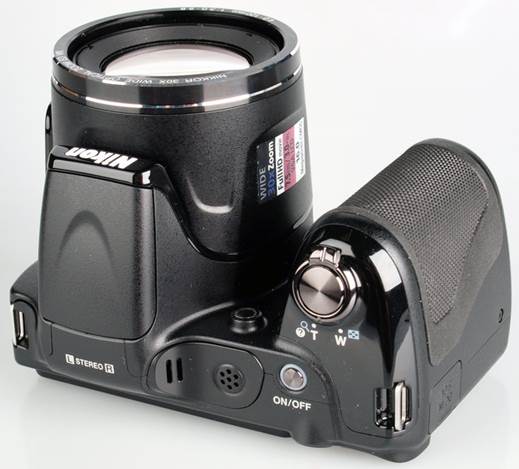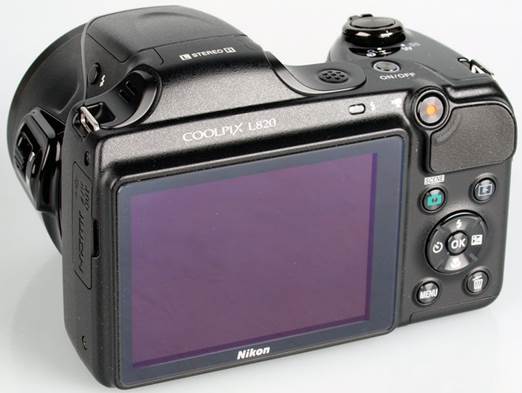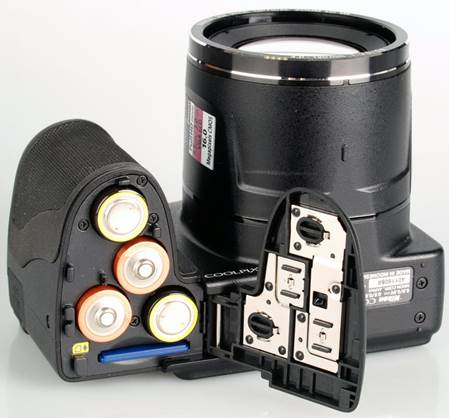The Nikon Coolpix L820 is well-known as a super-zoom
camera, which owns a 30x optical zoom lens.
Launched in January, 2013, Nikon Coolpix
L820 is a super-zoom camera with a 30x optical lens. It also owns a 16 MP
sensor and its video is recorded at full 1080p HD. L820 is available with the
plum, blue, red and black version, and its price is about $320.

The
Nikon Coolpix L820 is available with the color of plum, blue, black and red
Features
The Nikon Coolpix L829 features a 16MP
back-illuminated CMOS sensor and a 30x optical zoom lens. Each 5 mm is
equivalent to 22.5 – 675mm. The lens shift VR (vibration reduction) is provided
to avoid shaking during the shooting process, making your shots as sharp as
possible. In continuous shooting mode, this product can capture 8 frames per
second.
There is also an Easy Auto mode that helps
adjusting the camera’s settings to detect the particular type of scenes when
you are shooting. There are also other scene modes, filters and intelligent
portrait mode. This mode includes a smile timer, blink proof alert and glamour
retouch. After finishing shooting, if you wish, your photos can be edited in
the retouch menu. This also takes into account the filters such as selective
color and cross screen.
The video records at full 1080 HD with
stereo sound. It is also possible to view your photos in HDTV via a HDMI cable.

The
camera can take 8 fps under the continuous shooting mode
Main
features
·
16 megapixel CMOS back-illuminated CMOS sensor
·
30x optical zoom lens (35mm equiv: 22.5-675mm)
·
Lens-shift (VR) vibration reduction
·
3.0 inch 921k dot LCD screen
·
Side zoom lever
·
Full 1080p HD video recording
·
ISO 125 - 3200
·
1cm minimum focusing distance
·
Smart portrait system
·
Retouch menu
·
AA batteries
·
8 fps continuous shooting
Handling

The
3.0 inch and 921k dot screen
The outlook of the Nikon Coolpix L820 makes
us feel like it is a small DSLR camera. There is a large rubber grip and a
rubber pad at the back side which is for you to lay your thumb on. The camera
comes with a lens cap, but you will have to carefully remove it from the camera
before having it started, because an error announcement will occur on the
screen if you don’t do so. Your pictures can be played back with the lens cap
on. All you need is to press the playback button when turning off the camera. On
the top of the camera’s body, you will see a switch, whose function is to
change the focal length, and a zoom rocker for adjusting the zoom. There is a
button for activating the flash light and another on/off button on the top side
of the camera. At the back, you will see the movie record, playback, scene
mode, menu, delete buttons, a d-pad as well as an OK button for moving across
the camera menus. You can adjust the flash, self-timer, exposure compensation
and macro mode just by using the buttons of d-pad.
L820 owns a new menu layout of Nikon, which
might help navigating easier. Most of those things are built on the menu
button. We find the 3 inch screen bright, clear and it has an admirable
resolution of 920k dot.
The battery life is estimated to be about 320
shots, according to CIPA’s test results when using the alkaline batteries. Therefore,
you are able to use the camera for one or even two days before it runs out of
all battery and another one is needed. Despite that fact, this also depends on
the type of the battery you are using. If you bought a lithium battery, the
battery life would be 870 shots.

The
L820’s outlook is like a small DSLR camera
We picked out some shots in order to check
for the camera’s responsiveness, from the beginning to the first pictures, shot
to shot, focusing speed… We also took some photos and found the average in
order to have the most accurate and consistent result, making it easier to
compare with other cameras.
·
Shutter Response: 0.175 secs
·
Wide - Focus / Shutter Response: 0.25 secs
·
Full zoom - Focus / Shutter Response: 0.45 secs
·
Switch on Time to Taking a Photo: 0.175 secs
·
Shot to Shot without Flash: 2.4 secs
·
Shot to Shot with Flash: 2.4 secs
·
Continuous Shooting H: 7.1 fps
·
Continuous Shooting L: 2.0 fps
·
Continuous Shooting H: 120 fps: 113.7 fps
·
Continuous Shooting H: 60 fps: 60.0 fps
The H&L continuous shooting records pictures
at the full 16MP, with 120 fps and 60 fps recording at VGA and 1 MP.